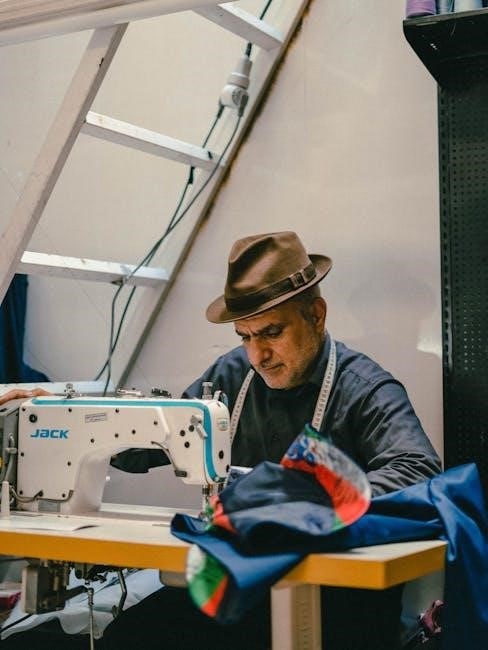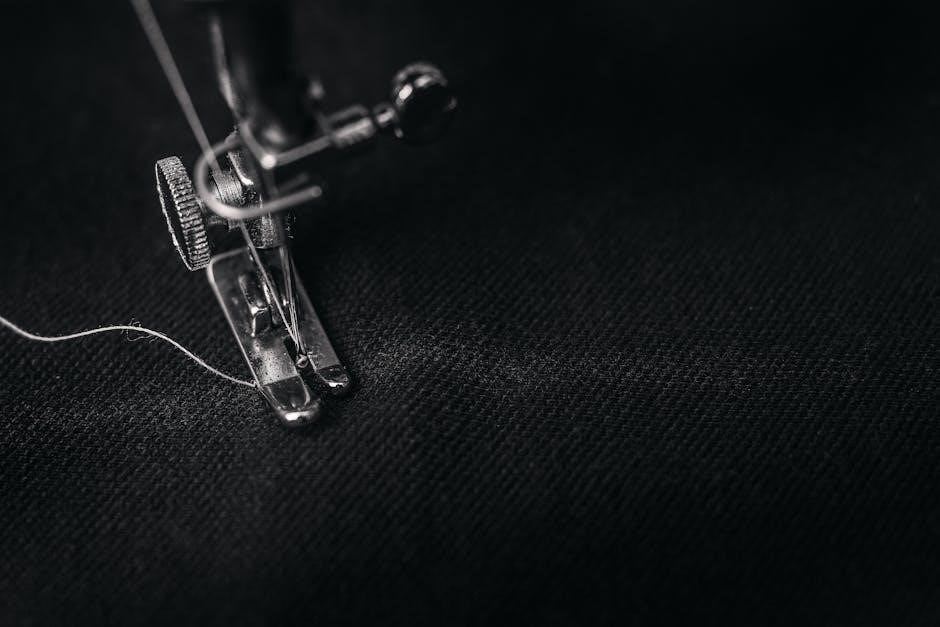pdo thread placement guide
PDO thread placement is a minimally invasive technique using biodegradable polydioxanone threads to lift and rejuvenate facial and body areas, stimulating collagen for improved texture and elasticity․
1․1 What Are PDO Threads?
PDO (Polydioxanone) threads are biodegradable, synthetic sutures made from polydioxanone, a material widely used in medical procedures for decades․ These threads are specifically designed for facial and body rejuvenation, aiming to lift and tighten sagging skin while stimulating collagen production․ Unlike traditional sutures, PDO threads are absorbed by the body over approximately 6 months, leaving behind a natural-looking result․ They come in various types, such as monofilament, spiral, and cog threads, each tailored for different areas and concerns․ FDA-approved and biocompatible, PDO threads are a popular choice for non-surgical facial and body lifting, offering a minimally invasive alternative to traditional surgical methods․
1․2 History and Evolution of PDO Thread Placement
PDO (Polydioxanone) threads have been used in medical settings since the 1980s as absorbable sutures․ Their application in cosmetic procedures began in the early 2000s, with the development of thread lifting techniques in Asia and Europe․ Initially used for facial rejuvenation, PDO threads gained popularity as a non-surgical alternative to traditional facelifts․ Over time, advancements in thread design, such as textured surfaces and varying thicknesses, improved their lifting capabilities and collagen-stimulating effects․ The technique has evolved to include specialized methods like vector lifting and combination therapies with fillers or Botox for enhanced results․ Today, PDO thread placement is a widely accepted, minimally invasive procedure for facial and body rejuvenation, offering customizable and long-lasting outcomes․
1․3 Key Benefits of PDO Thread Placement
PDO thread placement offers numerous benefits, making it a popular choice for facial and body rejuvenation․ It is a minimally invasive procedure with minimal downtime, allowing patients to resume daily activities quickly․ The biodegradable threads stimulate collagen production, enhancing skin elasticity and texture for a natural, youthful appearance․ Unlike surgical facelifts, PDO threads provide subtle, customizable results with reduced risks of complications․ They can be used on various areas, including the face, neck, and body, and are effective for lifting sagging skin and addressing signs of aging․ Additionally, the procedure is relatively painless due to the use of local anesthesia․ Overall, PDO thread placement is a safe, effective, and versatile option for achieving a refreshed and rejuvenated look without surgery․

Understanding PDO Thread Placement
PDO thread placement is a minimally invasive technique using biodegradable threads to lift and tighten the skin, stimulating collagen production for improved elasticity and a youthful appearance․
2․1 How PDO Threads Work
PDO threads are made of polydioxanone, a biodegradable material that dissolves naturally in the body over time․ When inserted into the subcutaneous layer of the skin, these threads stimulate collagen synthesis, which helps improve skin elasticity and texture․ The threads are designed to lift and tighten sagging areas, creating a more youthful appearance․ Depending on the type—mono, spiral, or cog—the threads provide varying levels of support and stimulation․ Once placed, the body gradually absorbs the threads over 6-12 months, leaving behind a network of collagen that maintains the lifting effect․ This mechanism ensures long-lasting results without permanent implants, making PDO threads a popular choice for facial and body rejuvenation․
2․2 Types of PDO Threads
There are three main types of PDO threads: mono, spiral, and cog threads․ Mono threads are smooth and unidirectional, primarily used for stimulating collagen production and improving skin texture․ Spiral threads feature a twisted design, providing greater tension and volume, often used in areas requiring more pronounced lifting․ Cog threads, with their barbed surface, offer strong tissue grip, ideal for addressing sagging skin and creating dramatic lifts․ Each type is tailored to specific aesthetic goals, allowing practitioners to customize treatments for facial and body rejuvenation․ The selection depends on the patient’s needs, such as skin laxity, desired lift intensity, and target areas like the face, neck, or body․
2․3 Anatomical Considerations for Thread Placement
Anatomical considerations are crucial for safe and effective PDO thread placement․ Practitioners must have a thorough understanding of facial and body anatomy to ensure precise thread insertion․ Key structures, such as the orbital rim, zygomatic arch, and mandibular border, guide thread placement to avoid nerves and blood vessels․ The subcutaneous layer is the primary target for thread insertion, as it allows for optimal lifting and stimulation of collagen production․ Anatomical landmarks also help in achieving natural-looking results by aligning threads with facial contours․ Proper placement respects individual variations in facial structure, ensuring minimal risk of complications and maximizing aesthetic outcomes․ This expertise enables practitioners to tailor treatments to specific areas, such as the brow, mid-face, or neck, for targeted rejuvenation․

Preparing for PDO Thread Placement
Preparing for PDO thread placement involves consultation, patient selection, and proper anesthesia options․ The treatment area is marked accurately to guide thread insertion, ensuring precise and safe placement․
3․1 Consultation and Patient Selection
A thorough consultation is essential to determine if PDO thread placement is suitable for the patient․ During this session, the practitioner discusses the patient’s concerns, desired outcomes, and medical history․ They assess facial anatomy and skin condition to create a personalized treatment plan․ Patient selection is critical, as ideal candidates are those with mild to moderate skin sagging and realistic expectations․ The practitioner explains the procedure in detail, addressing any questions or concerns․ This step ensures alignment between patient goals and achievable results, laying the foundation for a successful treatment․ Proper patient selection and clear communication are key to optimizing outcomes and satisfaction․
3․2 Anesthesia Options and Considerations
Topical anesthetic creams or injectable lidocaine are commonly used to ensure patient comfort during PDO thread placement․ The choice of anesthesia depends on the patient’s pain tolerance and the procedure’s extent․ Local anesthesia is often preferred for its effectiveness in numbing the treatment area, minimizing discomfort during thread insertion․ Proper anesthesia ensures a stress-free experience, allowing the practitioner to focus on precise thread placement․ Patients with higher sensitivity may benefit from stronger anesthetic options, while those preferring minimal intervention can opt for topical creams․ The goal is to balance comfort with procedural efficiency, ensuring optimal results without compromising safety or patient satisfaction․ Anesthesia selection is tailored to individual needs, making the procedure accessible to a wide range of candidates․
3․3 Marking the Treatment Area
Marking the treatment area is a critical step in PDO thread placement, ensuring precise and effective thread insertion․ The practitioner uses a surgical pen to outline the targeted zones based on the patient’s facial anatomy and desired outcomes․ This step guides the placement of threads, maximizing lifting effects while respecting anatomical structures like nerves and blood vessels․ The markings are tailored to the individual’s goals, such as defining cheekbones, tightening the jawline, or rejuvenating the neck․ Proper marking ensures symmetry and alignment, directly influencing the procedure’s success․ By carefully mapping the treatment area, the practitioner can achieve optimal results, blending artistry with technical precision to enhance natural beauty and restore youthful contours․

The PDO Thread Placement Procedure
The procedure involves patient preparation, anesthesia, and precise thread insertion using a cannula or needle․ Threads are placed strategically to lift and tighten target areas effectively․
4․1 Patient Preparation and Cleansing
Patient preparation begins with a thorough cleansing of the target area to remove makeup, oil, or impurities․ This ensures a sterile environment for the procedure․ Topical anesthesia or local anesthetic may be applied to minimize discomfort․ The skin is then marked with a pen to guide precise thread placement․ Cleansing is crucial to reduce the risk of complications and ensure optimal results․ The practitioner may also review the procedure steps and address any patient concerns before proceeding․ Proper preparation ensures comfort and safety, allowing the practitioner to focus on accurate thread insertion and achieving the desired aesthetic outcomes;
4․2 Thread Insertion Techniques
Thread insertion involves using a fine needle or cannula to place PDO threads into the subcutaneous layer of the skin․ The technique varies depending on the desired outcome, with threads inserted in specific patterns to lift and tighten target areas․ Practitioners may use a grid-like placement or create vectors for optimal lifting․ The threads are guided along predetermined paths to maximize results while avoiding anatomical structures like nerves and blood vessels․ The insertion process is typically quick, lasting 30 to 60 minutes, and is customized to the patient’s needs․ Proper technique ensures minimal discomfort and natural-looking results, with the threads stimulating collagen production for long-term rejuvenation․
4․3 Accurate Placement and Securing the Threads
Accurate placement ensures the PDO threads are strategically positioned to achieve the desired lift and rejuvenation․ The practitioner carefully secures each thread to underlying tissue anchors, providing stability and preventing migration․ Proper tension is applied to avoid skin dimpling or irregularities, ensuring a smooth, natural appearance․ The threads are often cross-hatched or layered to enhance support and maximize collagen stimulation․ Securing techniques may vary, with some threads designed to engage tissue for added grip․ This step is crucial for both immediate results and long-term durability, as precise placement directly impacts the effectiveness of the lift and the patient’s satisfaction with the outcome․ Attention to detail ensures a seamless integration of the threads with the surrounding anatomy․

Advanced Techniques in PDO Thread Placement
Advanced techniques involve vector lifting and volumization, utilizing tissue-engaging threads for enhanced results․ These methods create tailored lifting effects, addressing specific areas for a youthful appearance․
5․1 Vector Lifting and Volumization
Vector lifting and volumization are advanced techniques that enhance the effectiveness of PDO thread placement․ By creating targeted lifting vectors, practitioners can address specific areas of sagging or volume loss․ This method involves strategically placing threads to create a natural, youthful appearance․ Volumization techniques, such as combining threads with fillers or PRP, amplify results by restoring volume and defining facial contours․ The BussoLyft technique is a prominent example, utilizing tissue-engaging threads to create lifting vectors that stimulate collagen production․ These techniques ensure long-lasting, natural-looking results, making them ideal for patients seeking a subtle yet impactful facial rejuvenation; The combination of precise thread placement and volumization offers a comprehensive approach to achieving aesthetic goals․ This method is particularly effective for addressing areas like the cheeks, jawline, and neck․
5․2 Combination Therapies for Enhanced Results
Combination therapies with PDO threads can significantly enhance results by addressing multiple concerns simultaneously․ Pairing PDO threads with fillers, Botox, or PRP amplifies outcomes, offering a comprehensive facial rejuvenation․ Fillers add volume to hollow areas, while Botox relaxes muscles to reduce wrinkles․ PRP stimulates collagen production, improving skin texture․ This multi-faceted approach creates a more youthful, balanced appearance; Practitioners often use these combinations to target areas like the cheeks, jawline, and neck․ The synergy of these treatments extends results, making PDO thread placement more versatile and effective․ Combining therapies is particularly beneficial for patients seeking dramatic yet natural-looking improvements without surgery․ This tailored approach ensures personalized solutions for diverse aesthetic goals․ The integration of PDO threads with other treatments is a key trend in modern aesthetic medicine․

Post-Procedure Care and Recovery
After PDO thread placement, patients should avoid strenuous activities, cleanse the area gently, and follow specific care instructions to ensure proper healing and optimal results․
6․1 Immediate Post-Procedure Care

Immediate post-procedure care is crucial for optimal healing and results․ Patients should apply ice to reduce swelling and avoid strenuous activities for 24-48 hours․ Mild pain or discomfort can be managed with over-the-counter pain relievers․ It’s essential to keep the treated area clean and avoid touching or rubbing it․ Makeup and skincare products should be avoided for at least 24 hours․ Patients should also refrain from excessive facial expressions, smoking, and alcohol consumption during the initial recovery phase․ Proper hygiene practices, such as gentle cleansing with a mild soap, are recommended to prevent infection․ Following these guidelines ensures a smooth recovery and minimizes the risk of complications․
6․2 Long-Term Recovery and Maintenance
Long-term recovery involves maintaining the results of PDO thread placement through proper skincare and lifestyle habits․ Patients should protect their skin from sun exposure, as UV rays can degrade collagen․ Using sunscreen with at least SPF 30 daily is recommended; Hydration is key to support skin elasticity and texture․ Regular follow-ups with the practitioner are advised to monitor results and address any concerns․ Avoiding smoking and excessive alcohol consumption helps preserve skin health․ Gentle facial exercises and maintaining a balanced diet can also enhance the longevity of the results․ Proper maintenance ensures the effects of PDO threads last up to 2 years, providing a youthful and rejuvenated appearance․

Results and Longevity of PDO Threads
PDO threads provide immediate visible results, with natural-looking lifting and skin tightening․ The biodegradable material stimulates collagen production, enhancing skin texture and elasticity, lasting up to two years․
7․1 Expected Outcomes and Results
PDO thread placement offers immediate visible results, with noticeable lifting and tightening of the skin․ The procedure stimulates collagen production, enhancing skin elasticity and texture․ Patients typically experience a youthful, refreshed appearance, with improved facial contours and reduced sagging․ The biodegradable threads gradually dissolve over 6-12 months, but the collagen stimulation provides lasting results for up to 2 years․ Outcomes vary depending on factors like thread type, placement technique, and individual skin condition․ Proper placement ensures natural-looking results, while incorrect techniques may lead to unevenness․ Combining PDO threads with other treatments, such as fillers or Botox, can further enhance the overall aesthetic outcome․ Regular follow-ups and proper aftercare are essential to maintain optimal results․
7․2 Factors Affecting the Longevity of Results
The longevity of PDO thread placement results depends on several factors, including thread type, placement technique, and patient characteristics․ High-quality threads with proper tension and accurate placement yield longer-lasting results․ Patient factors such as age, skin elasticity, and lifestyle also influence durability․ Thread dissolution rates vary, with most lasting 6-12 months, but collagen stimulation extends results up to 2 years․ Improper techniques or inadequate thread numbers can reduce longevity․ Maintenance treatments and combining PDO threads with other procedures, like fillers or Botox, enhance and prolong outcomes․ Proper aftercare and avoiding excessive sun exposure or smoking also contribute to sustained results․ Skilled practitioners ensure optimal, long-lasting effects tailored to individual needs․

Risks and Complications
PDO thread placement may cause temporary swelling, bruising, or thread visibility․ Rare complications include infection, asymmetry, or thread migration, often due to improper technique or aftercare․
8․1 Common Risks and Side Effects
Common risks of PDO thread placement include mild swelling, bruising, and temporary pain at insertion sites․ Some patients may experience thread visibility or palpability, though this often subsides as tissues heal․ Rarely, complications like infection or thread migration can occur, typically due to improper technique or inadequate aftercare․ Most side effects are temporary and resolve within a few weeks․ Proper practitioner expertise and adherence to post-procedure guidelines significantly minimize these risks, ensuring a safe and effective outcome for most patients․

Cost Considerations
Common risks include mild swelling, bruising, and temporary pain․ Rarely, complications like thread migration or infection can occur․ Proper technique minimizes these risks effectively․
9․1 Factors Influencing the Cost
The cost of PDO thread placement varies based on several factors, including the number of threads used, thread type (mono, cog, or spiral), and the practitioner’s expertise․ Geographical location, clinic reputation, and the extent of the procedure also impact pricing․ Combination therapies, such as adding fillers or Botox, can increase the overall cost․ Additionally, the patient’s specific needs, like targeted areas (face, neck, or body), influence the final price․ Follow-up sessions or touch-ups may also be factored into the total cost․ Generally, prices range widely, depending on these variables, making a personalized consultation essential for an accurate quote․
PDO thread placement offers a minimally invasive, effective solution for facial and body rejuvenation, providing natural results and stimulating collagen production for a youthful appearance with minimal downtime․
10․1 Final Thoughts on PDO Thread Placement
PDO thread placement is a revolutionary, minimally invasive technique offering natural, youthful results with minimal downtime․ By stimulating collagen production, it enhances skin texture and elasticity, providing a subtle lift and rejuvenation․ Its biodegradable nature ensures safety and efficacy, making it an excellent alternative to surgical facelifts․ Proper technique and patient selection are crucial for optimal outcomes․ Consultation with a skilled practitioner ensures personalized treatment, addressing individual concerns effectively․ With advancements in thread types and placement methods, PDO thread placement continues to evolve, delivering long-lasting, natural results for facial and body rejuvenation․ It remains a popular choice for those seeking a non-surgical, low-risk solution to combat signs of aging and achieve a refreshed appearance․
